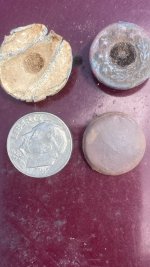Oroblanco
Gold Member
- Jan 21, 2005
- 7,838
- 9,830
- Detector(s) used
- Tesoro Lobo Supertraq, (95%) Garrett Scorpion (5%)
Sure. Send me off on an errand. Not.
Wow too much effort for you to Google a simple thing huh?

 Well back to ignore you go, and you can sure find your own answers.
Well back to ignore you go, and you can sure find your own answers. 
Don Jose, no worries, we have plenty of published statements from the Jesuits <Polzer, Burrus, et al> in which they deny ever having any mines or treasures. So they can have no claim on Tayopa.







 Stick around, we may butt heads
Stick around, we may butt heads  bt we are actually friends NO? Coffee?
bt we are actually friends NO? Coffee?



